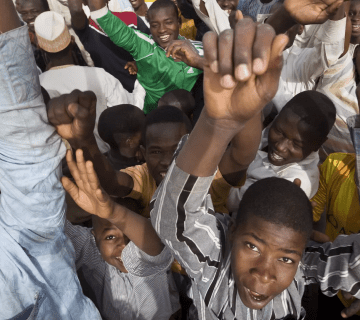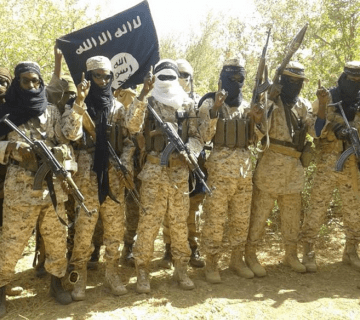On October 26, 2025, the Rapid Support Forces (RSF) seized control of Al-Fashir, the capital of North Darfur State, after more than 260 battles and a 533-day siege making it the third-longest siege in the past century. The fall of Al-Fashir marks a decisive turning point in the trajectory of the war, as Darfur has now come almost entirely under RSF control, granting it significant territorial, political, and strategic advantages with far-reaching implications. Al-Fashir holds both symbolic and strategic significance. It serves not only as the administrative capital of the Darfur Region and the seat of the regional government but also as the historical capital of the Darfur Sultanate (1604–1874). This dual status gives the city’s capture immense symbolic weight within the RSF’s broader narrative of establishing a parallel governance structure. In practical terms, the city’s fall realizes one of the core slogans of the RSF’s rhetoric “Bringing down the state of ’56” a phrase referring to the dismantling of Sudan’s centralized post-independence state order and its replacement with new governance arrangements rooted in de facto power and territorial control.
The Battle for the City’s Fall
The RSF began their efforts to seize control of Al-Fashir in May 2024, targeting the Sudanese Armed Forces’ (SAF) last major stronghold in Darfur—the Sixth Infantry Division headquarters and the Western Command. During the first year, RSF relied on direct ground assaults, a tactic previously used to capture other Darfuri cities such as Nyala and Zalingei. However, they encountered stiff resistance from SAF and its allied forces, forcing them to retreat multiple times.
By mid-2025, RSF shifted its military strategy from frontal assaults to a gradual war of attrition and complete encirclement. It began by narrowing SAF’s maneuvering space, targeting and capturing Zamzam Camp, south of Al-Fashir, in April 2025. RSF then sealed all access routes to the city and dug a trench around it, effectively taking full control of movement in and out of Al-Fashir. Air defense systems were installed to block aerial resupply, leading to the city’s total isolation.
RSF also reinforced its ranks with fighters from signatories of the Juba Peace Agreement including forces loyal to Taher Hajar, Al-Hadi Idris, and a faction of the Justice and Equality Movement (JEM) led by Suleiman Sandal—in addition to mercenaries from Colombia and South Sudan, who operated drones and artillery systems to intensify bombardments on the city.
By August 2025, SAF forces inside Al-Fashir were exhausted, and RSF had tightened its siege around the Sixth Infantry Division from four directions. Although SAF managed to airdrop limited supplies to its besieged units in late September, the RSF launched its final offensive on October 26, capturing the military headquarters after more than 17 months of continuous fighting. SAF Commander-in-Chief Abdel Fattah al-Burhan later announced that the military leadership had authorized the withdrawal of its forces from the city following an assessment of the battlefield situation.
A Costly Victory
The victory in Al-Fashir came at a heavy price, both militarily and politically. Insights recorded 268 battles in which the RSF suffered severe losses, including the deaths of several senior commanders such as Ali Yaqub and Abdelrahman Garan Shatta, with overall fatalities among RSF ranks estimated in the thousands. The prolonged siege also drained the group’s resources and weakened its image as a swift and decisive force. Politically, the siege became a source of international pressure on the RSF. It ignored UN Security Council Resolution 2736, issued on June 13, 2024, which called for the lifting of the siege on the city. Instead, RSF tightened its blockade, cutting off food and medical supplies, disrupting water lines, and launching over 500 artillery and air strikes that targeted residential areas and hospitals, resulting in the deaths of more than 2,000 civilians.
After entering the city, RSF troops committed widespread massacres that left over 2,000 people dead and displaced around 88,000, while the fate of more than 200,000 remains unknown, according to the IOM. These events prompted strong condemnation from the United Nations, as well as regional and international actors, further damaging the RSF’s already tarnished reputation—particularly given its previous atrocities in West Darfur and Central Sudan over the past two years—and undermining its attempts to portray itself as a disciplined and legitimate governing authority. Civilians have remained vulnerable to the RSF’s systematic abuses, as areas under their control routinely turn into zones of killing, looting, and terror. October, in particular, was the second deadliest month of the war — with 2,322 civilians killed — following May 2023, when theRSF carried out acts of ethnic cleansing against the Masalit community in Eg-Geneina.
In addition to the more than 2,000 people killed in Al-Fashir, RSF forces committed grave violations in Bara, where over 300 civilians were massacred in a series of excessively violent attacks marked by torture, looting, and enforced disappearances. Bodies remain scattered in the streets due to restrictions on humanitarian access. The IOM reported the displacement of more than 25,000 civilians from Bara and its surrounding areas following repeated RSF assaults. Meanwhile, the Sudanese Doctors’ Network documented summary executions of 38 unarmed civilians in Umm Dam Haj, carried out by RSF elements on an ethnic basis.
Although the RSF seeks to establish a parallel authority and project an image of political and administrative legitimacy in the region, its conduct on the ground remains closer to that of a criminal militia. This suggests that even the RSF’s high command is unable—or unwilling—to restrain such abuses, as they constitute the core of its organizational structure and the mechanism through which it maintains control.
The Trajectory of the War
With the collapse of the Al-Fashir front, the RSF will be able to redeploy a larger number of troops toward the North Kordofan axis, threatening the city of Al-Ubayyid, which is directly connected to Khartoum by a major road. This development comes at a time when the government is attempting to revive the capital to project. Any escalation or direct threat to Al-Ubayyid would therefore undermine the government’s efforts to demonstrate its ability to restore control and reestablish civilian administration. Signs of this shift have already appeared on the ground. Just one day before the fall of Al-Fashir, RSF forces recaptured the city of Bara located north of Al-Ubayyid along As-Sadirat route a city SAF had reclaimed onlythe previous month.
In parallel, the RSF continues to besiege the towns of Babanusa, Kadugli, and Dilling areas of strategic importance to the Sudan People’s Liberation Movement–North (SPLM–N) led by Abdelaziz al-Hilu, a partner in the Tasis coalition. The movement is expected to play a larger role in the coming battles in South Kordofan. In response to these successive battlefield losses, SAF has declared a state of general mobilization and begun reactivating its camps across several states in an attempt to regain the initiative on the ground.
Prospects of a Ceasefire
The fall of Al-Fashir is likely to shake the balance of power within the Port Sudan coalition, which includes political factions with divergent interests. The Joint Force of Darfur Movements that signed the Juba Peace Agreement and that currently hold significant representation in the executive and sovereign authorities have lost their territorial bases in the region. This undermines their justification for maintaining their current positions and exposes the fragility of the Juba Agreement, whose leaders have now become part of the political bloc led by the RSF.
Conversely, the fall of Al-Fashir strengthens the RSF’s negotiating position amid efforts by the Quad to broker a ceasefire. The loss of the city represents a strategic setback for SAF, as it removes one of the key conditions it had set within the government’s ceasefire roadmap namely, the lifting of the siege on Al-Fashir before entering negotiations.
SAF had been banking on achieving a field balance by expanding in North and West Kordofan or by holding its ground in Al-Fashir to maintain the ability to threaten the RSF in Darfur to the same extent that the latter threatens White Nile and Khartoum states. However, its failure in Kordofan and the loss of Al-Fashir have eliminated this balance in favor of the RSF.
Within this context, diverging positions are expected to emerge among the SAF and its allies regarding any forthcoming settlement. While the military leadership in Port Sudan may lean toward accepting a ceasefire under the combined weight of battlefield setbacks and external pressure, the commanders of the Joint Force of Darfur Movements are likely to adopt a more hardline stance particularly those who boycotted the Geneva talks in August 2024 as they stand to lose the most from the new realities in Darfur.
Aseel Abdallah is the Founder & Managing Director of Insights.
Photo Credits: REUTERS/Mohamed
This article was originally published on Insights website. Permission to republish it has been granted to the Horn Institute by the author.



